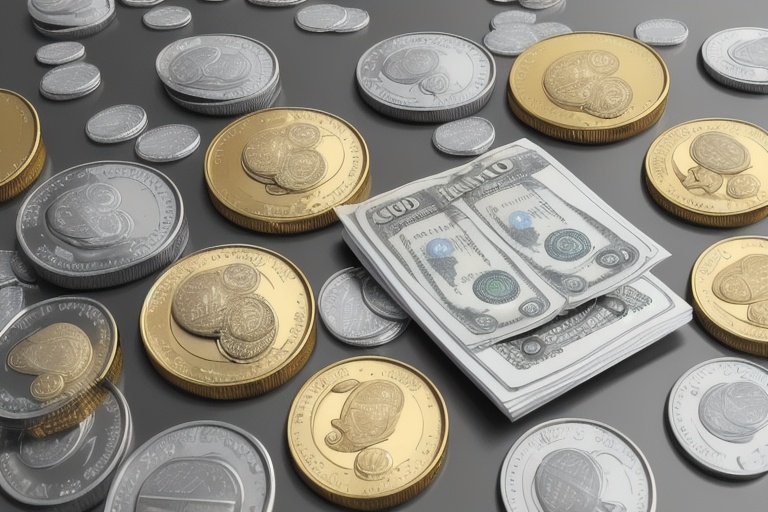As a coin collector and dealer with a wealth of experience, I often come across enthusiasts eager to deepen their understanding of numismatics—the study and collection of currency, including coins. The appeal of coin collecting is both universal and enduring, capturing the imaginations of individuals across all age brackets. This pastime allows you to hold a piece of history in your hands and, for many, represents a lifelong pursuit of rare and extraordinary specimens. Our aim is to illuminate the many facets of this hobby, particularly the elements that determine the worth of your collection.
As a coin collector and dealer with a wealth of experience, I often come across enthusiasts eager to deepen their understanding of numismatics—the study and collection of currency, including coins. The appeal of coin collecting is both universal and enduring, capturing the imaginations of individuals across all age brackets. This pastime allows you to hold a piece of history in your hands and, for many, represents a lifelong pursuit of rare and extraordinary specimens. Our aim is to illuminate the many facets of this hobby, particularly the elements that determine the worth of your collection.
Understanding Coin Collecting
To the layperson, all coins might appear functionally the same—mere currency for everyday transactions. However, coin collectors recognize that every piece carries a unique story, expressed through its history, design, and the circumstances of its creation. Collecting can be approached from countless angles; some enjoy amassing coins from a specific historical era, such as the Roman Empire or the early United States, while others might focus on a theme, such as wildlife or national landmarks.
A collector might also have a preference for a particular metal, be it gold, silver, or bronze, or a penchant for coins from a certain mint or country. Regardless of the direction your numismatic journey takes, what remains constant is the pursuit of coins that hold special value due to their rarity, historical significance, or beauty.
The Importance of Coin Grading
A fundamental concept in the field is coin grading, an assessment of a coin's condition. Grading ranges from 'Poor,' indicating a coin heavily worn from circulation, to 'Perfect Mint State,' the condition of a coin with no wear and no flaws visible under magnification. The grade of a coin can dramatically affect its market value—coins in superior condition often fetch much higher prices.
For collectors, mastering the grading system is akin to learning a second language. Becoming fluent allows you to better evaluate your collection and navigate the market with confidence. Recognizing the subtleties of wear, luster, and strike quality can mean the difference between an ordinary and a landmark acquisition.
The Intricacies of Coin Valuation
Valuation is the heart of coin collecting, whether pursued as a passion or an investment. Rarity naturally plays a pivotal role; coins that are scarce—due to limited mintage numbers or survival rates—tend to be more valuable. But rarity isn't the sole factor. A coin's historical narrative can enhance its allure, with pieces associated with significant events or noteworthy figures often commanding a premium.
The condition is also critical; a well-preserved coin might realize prices many times that of its worn counterparts. Like any collectible, the principle of supply and demand exerts a strong influence on coin values. Keeping abreast of market trends and collector interests can guide your decisions when buying or selling.
Navigating Market Trends
The numismatics market is vibrant and ever-changing, influenced by a variety of factors including economic conditions, new discoveries, and shifts in collector interest. Understanding these dynamics is key to making informed choices. For example, a surge in popularity of a particular coin type could result in short-term price increases. Conversely, an oversaturated market might lead to decreased values.
Staying informed requires diligence and research. Regularly consulting published price guides, attending coin shows, participating in online forums, and subscribing to numismatic publications can provide invaluable insight into current trends.
The Role of Professional Assessment
Given the complexity of valuation, seeking expert advice is often prudent. An experienced coin dealer or a professional numismatist can offer more than just an assessment—they can share knowledge gained through years of handling countless coins. They'll consider not just the tangible aspects like grade and rarity but also the more nuanced elements of desirability and long-term collectability.
When seeking out such professionals, look for those with sterling reputations, verified by affiliations with organizations such as the Professional Numismatists Guild (PNG) or the American Numismatic Association (ANA). Transparency, ethical business practices, and a track record of fair dealings are the hallmarks of a trusted advisor in the realm of coins.
The Joy of Coin Collecting
Ultimately, whether you view coin collecting as a hobby or a form of investment, the journey is deeply personal and immensely rewarding. The process teaches patience and discipline, as the most meaningful collections are often built over many years, one careful acquisition at a time.
Numismatics offers a unique way to connect with the past and the wider world, creating a portfolio that is both a reflection of personal taste and a testimony to historical narratives. In building your collection, you'll likely forge relationships with fellow enthusiasts and experts—ties that enrich the experience beyond the intrinsic value of the coins themselves.
Coin collecting is a doorway to a world where art, history, economics, and craftsmanship intersect. Each coin tells a story, and as a collector, you become a part of that story. Embrace the learning curve, celebrate the successes, and remember that each coin you add to your collection is a treasure in its own right. Happy collecting!
Information for this article was gathered from the following source.

